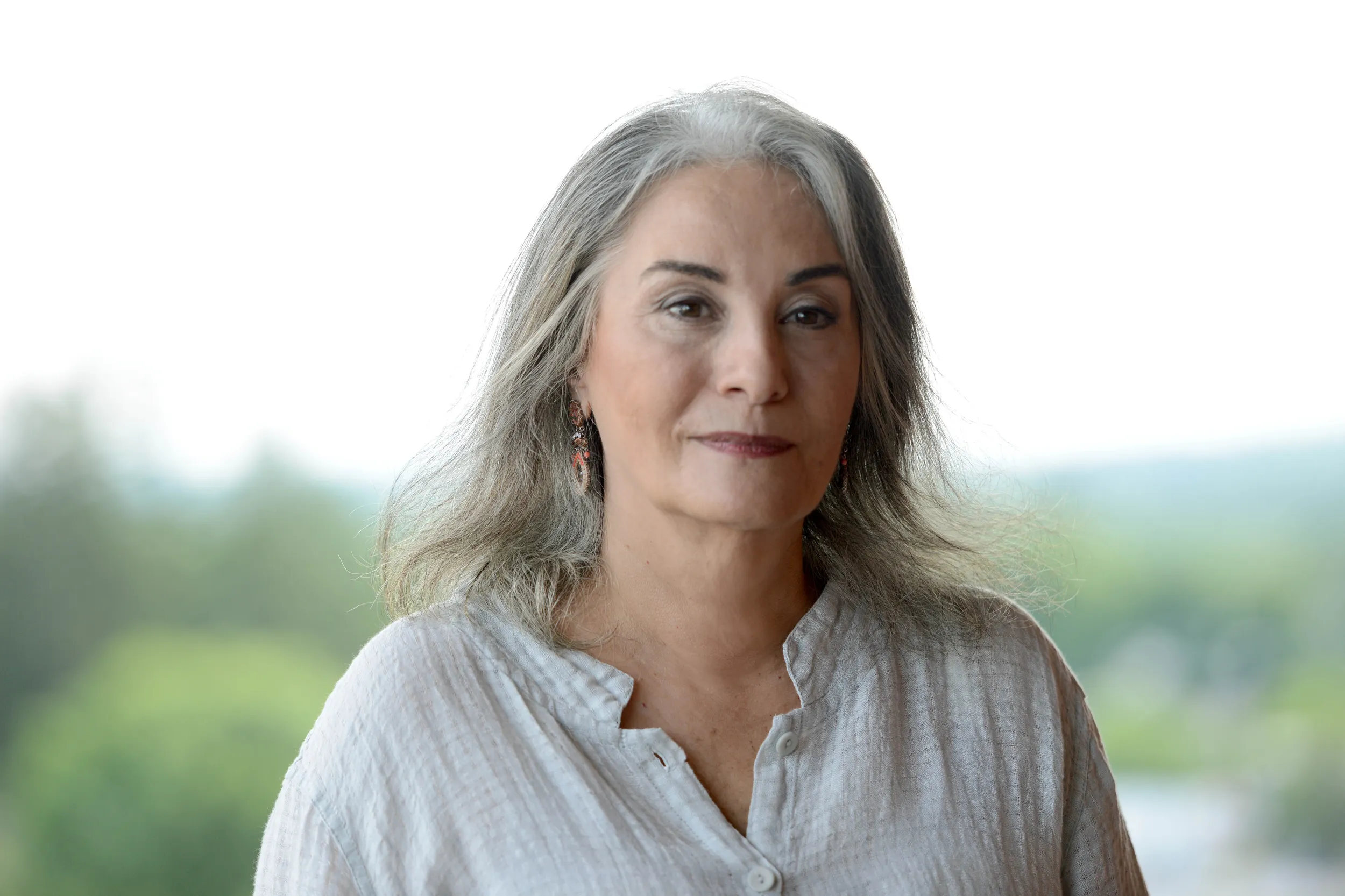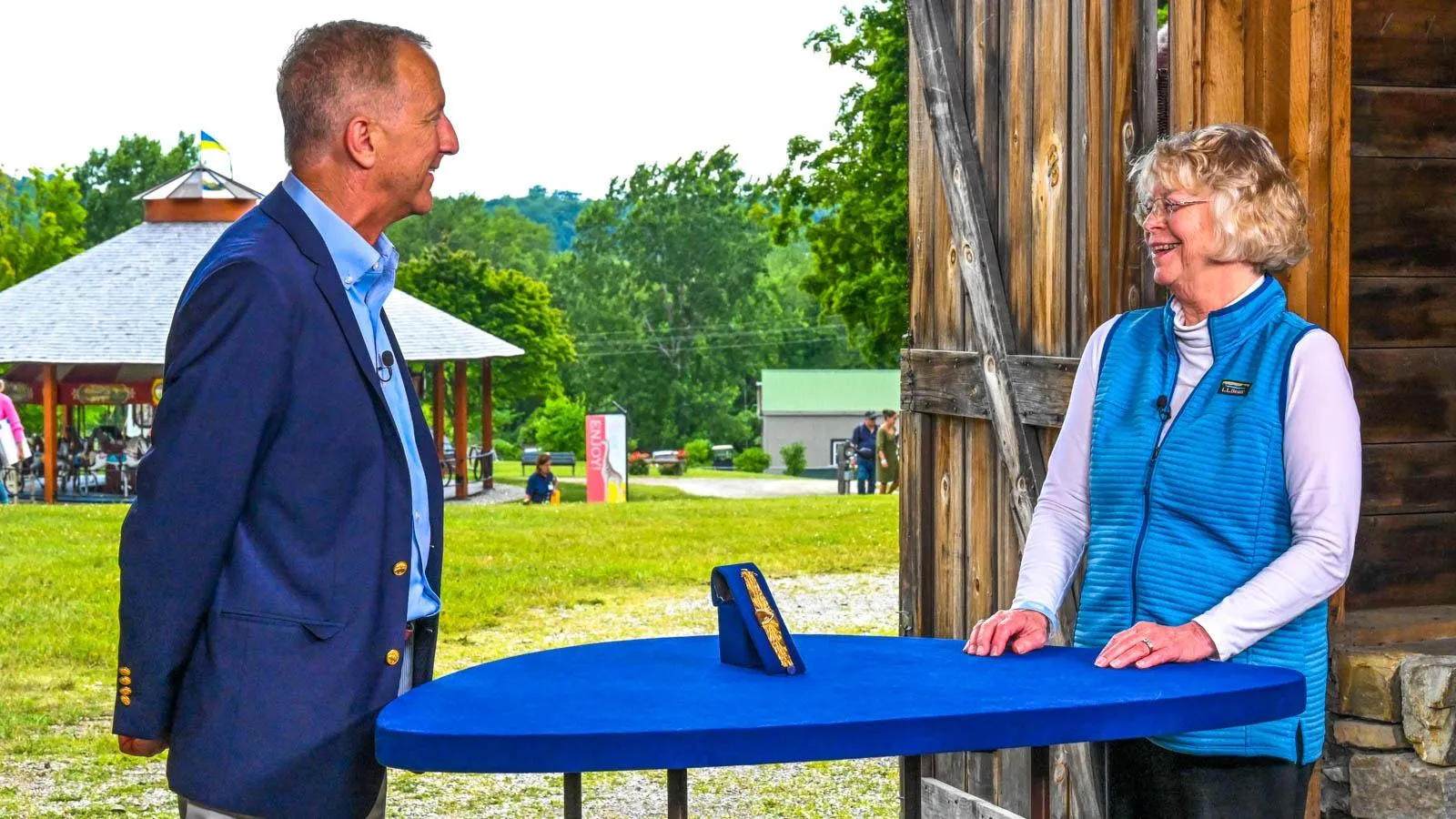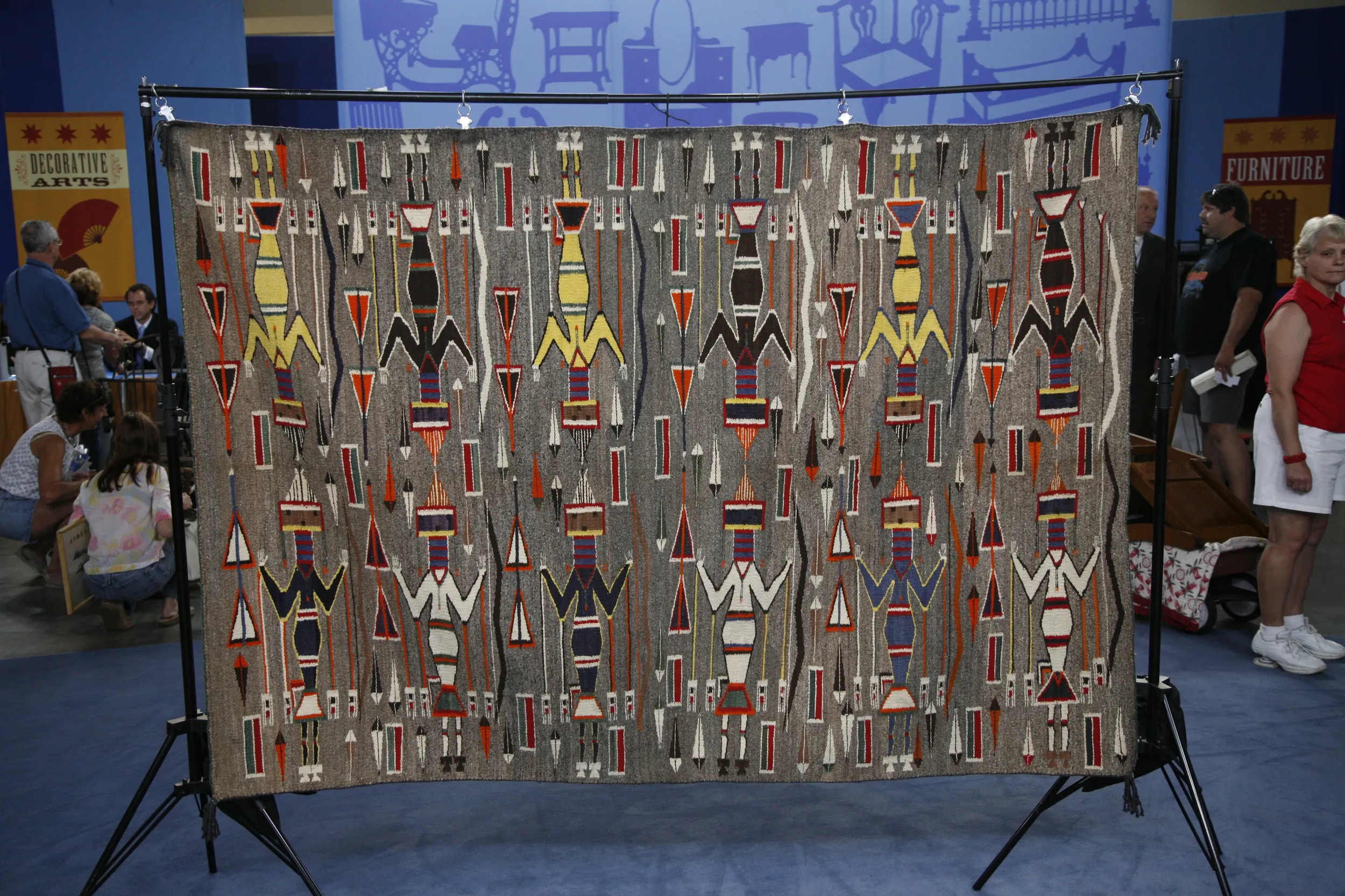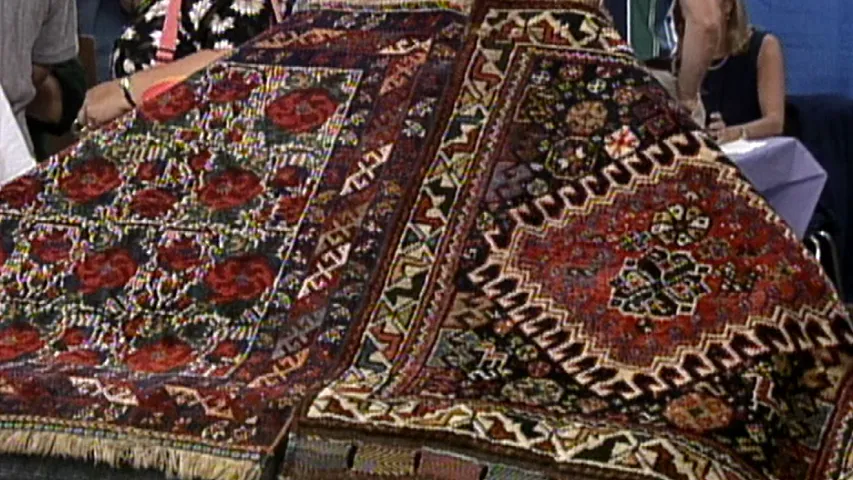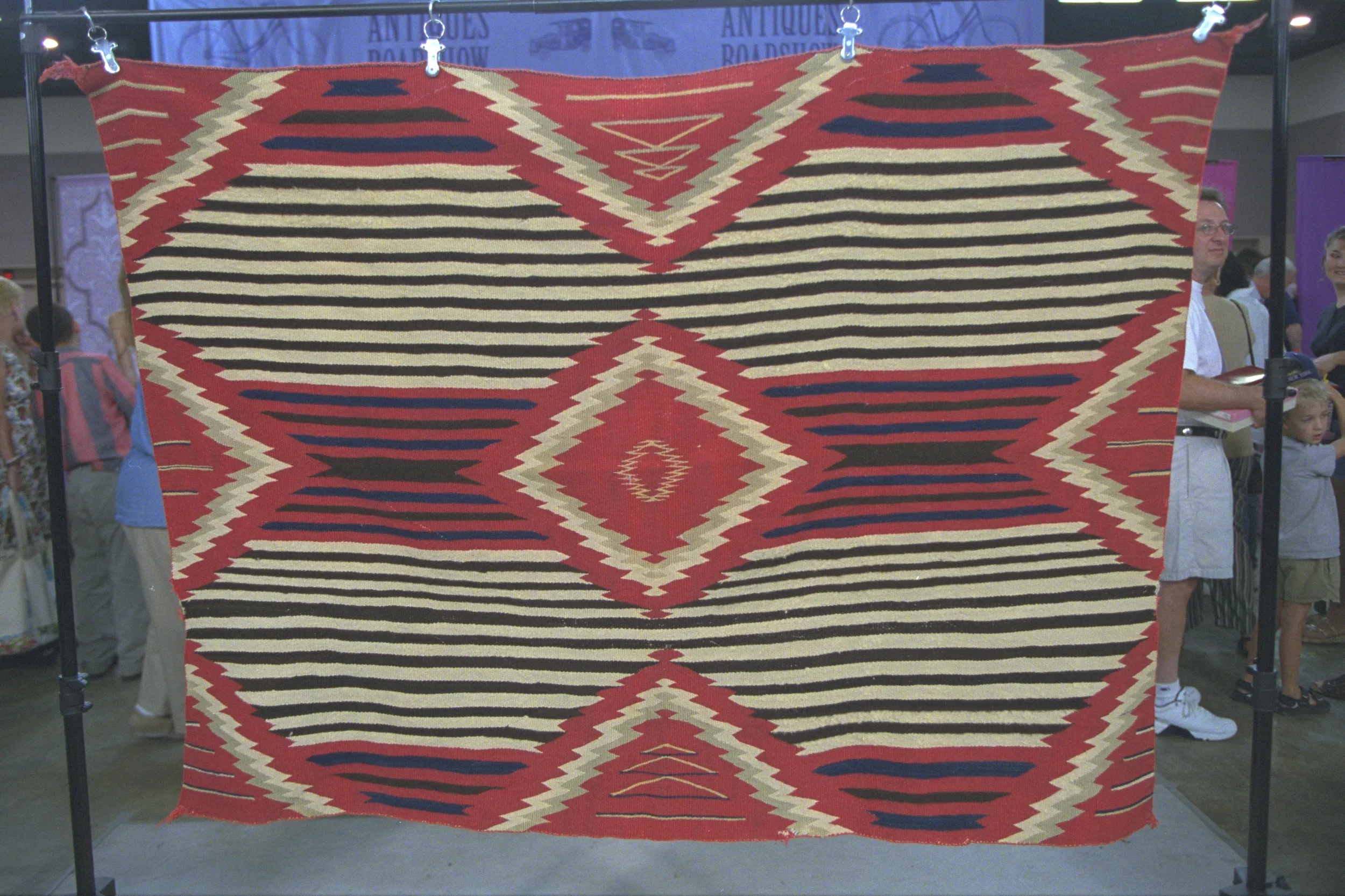GUEST: This weaving was in a camp that we purchased in, uh, Northern Maine, a wilderness camp. It was on a daybed, folded. As far as I know, it'd been there since the 1930s, or when the camp was built in the 1830s. I don't know anything about it.
APPRAISER: When did you acquire the cabin?
GUEST: 30 years ago.
APPRAISER: And you bought it furnished?
GUEST: Yes, basically they left what they didn't want.
APPRAISER: It's a lovely weaving. It's a Moki serape.
GUEST: Um... Oh, it is?
APPRAISER: It is Navajo, but it's designed after the Spanish serape. They were influenced by it.
GUEST: Mm-hmm.
APPRAISER: It was worn over the shoulders on the horizontal. Moki is the name that the Spaniards gave it. It's a derivative of Hopi. This pattern started showing up in the American Southwest in the late 1700s. And we really didn't see anything woven after 1900. The most identifying features are the banded stripes of brown and blue. The blue is an indigo dye. There's a vibrant mix of fibers in this weaving. I believe this particular weaving is probably from 1878 to probably 1890. This was a item worn by the Indigenous people. It was not made for the trade. It has glorious form and color. The condition's remarkable. At auction, they've been showing up at $18,000 to $22,000.
GUEST: (chuckles) It's a... And I have several more!
APPRAISER: It's an exquisite weaving.
GUEST: Yay! (giggles)
CREW: Okay, very nice-- congratulations. Stay right where you are. No, I can't, I got to move!
(all laugh)
